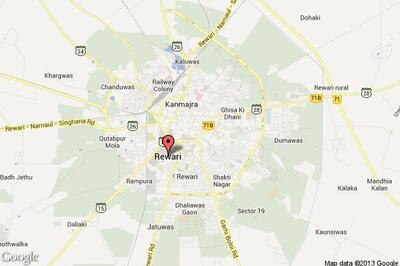
views
MYSORE: Rain water harvesting (RWH) is a great solution to water crisis. The successful experiment of rain water harvesting (RWH) in quite a few villages in Heggadadevana Kote (H D Kote) taluk, one of the most backward taluks in the state, has solved the water problem effectively. It all began when the villagers of Kanakanahalli, B Matakere, Kadubegur, Dodda Bargi and many other villages in Saragur hobli were witnessing drying of open wells with water table depleting to more than 300 feet in early 1990s. They were worried a lot then. The authorities had no other options to sink tubewells to augment drinking water and there were only a few borewells to carry out farming activities. Those unable to shell out money on tubewells and disturbed by depletion of water table migrated to coffee estates in Kodagu, rubber estates in Kerala and neighbouring Mandya districts in search of jobs. They returned from estates to plough and take up sowing of kharif crop and even tried their luck with commercial crops like cotton and tobacco.The fortunes of these farming and marginalised families changed over the years as the MYRADA, a non-government organisation (NGO) working for micro-credit initiatives and sustainable development in southern India, started water shed programmes covering 1,553 hectares and about 43 villages in the taluk.They initiated water conservation programmes with public participation, constituting water users society involving 430 farmers to start with and extended in phases across the taluk. Though, there was no positive response from the farmers initially, they were convinced when MYRADA spent money on digging bunds, farm ponds and trenches measuring 2.5 metres by 20 metres to check flow of water in hilly region and in rain-fed areas. Today, there are many bunds, 98 agriculture ponds, 113 gully plugs, 430 organic fertiliser pits with 70 per cent investment from the MYRADA and 30 per cent from the public contribution in these villages. This has yielded positive results with 5 feet water availability in 10 feet deep farm ponds and also in trenches inside the fields.The success of watershed programmes has prevented migration considerably (up to 70 per cent) as the farmers are harvesting multiple crops like cotton, tobacco, ragi, cereals and there is no scarcity of water for drinking or agriculture activities. Thanks to MYRADA, the water table has increased from 300 ft to 100 ft in the region in the last one decade, said Chandrappa, a farmer. He said that most of the borewells are sunk for maximum of 150 ft in fields. The farming community which has received results in watershed programmes has now shifted its focus on improving average yield of cotton from 400 to 700 kgs per acre in recent years.Srinivas, a MYRADA field director, said that the farmers have come together to start an Organic Farmers Club and Self-Help Groups (SHGs) using revolving funds to utilise it on land based activities. Basavaraju, a villager, claimed that their farm ponds had water when Nugu river, a tributory of Kabini dried up in the year 2000.Channappa, head of the H D Kote MYRADA unit, said that the success of watershed programmes has even attracted Forest Department to try it out in Bandipur National Park to provide drinking water to animals during dry spell.The 42 watershed villages in the taluk with water user societies and 153 Self-Help Groups have stepped up campaign on organic farming involving 1,500 big and marginal farmers covering 4,000 acres. They have also managed to get the Polland based bank for four years to improve soil quality and are working towards demanding a minimum of 20 per cent premium on organic agriculture produces. The farmers have also entered into an agreement for quality certification of organic farms and have made mandatory to grow 40 saplings per acre and use bio-fertilisers in fields.GANDETHUR, A model villageGandethur, a village with 150 houses, in the backwaters of Kabini reservior, is now a model village with almost all the villagers adopting rain water harvesting. Though the backwater is just one hundred meters from this hamlet, the residents faced drinking water problems in rainy season and also in summer as the could not go to the river due to increase in movement of wild animals, particularly elephants.The Zilla Panchayat, with 70 per cent funding from UNICEF and the rest from beneficiaries, has experimented to construct 5,000-litre water storage tanks and adopt rain water harvesting. Now each household can use about 30,000 litres of water for both drinking and domestic purposes from June to November. There are a few instances in which the residents have used the collected water during wedding and festivities. The rain water harvesting at the government school and Panchayat hall has turned out to be a model to other villages.Swamy, a villager, said that many top officials and study teams have visited their village to understand the implementation and utilisation of rain water.U M Ravikumar, a conservationist, said that the government should do similar experiments in both rural and urban areas and educate the masses on the benefits of rain water harvesting.


















Comments
0 comment